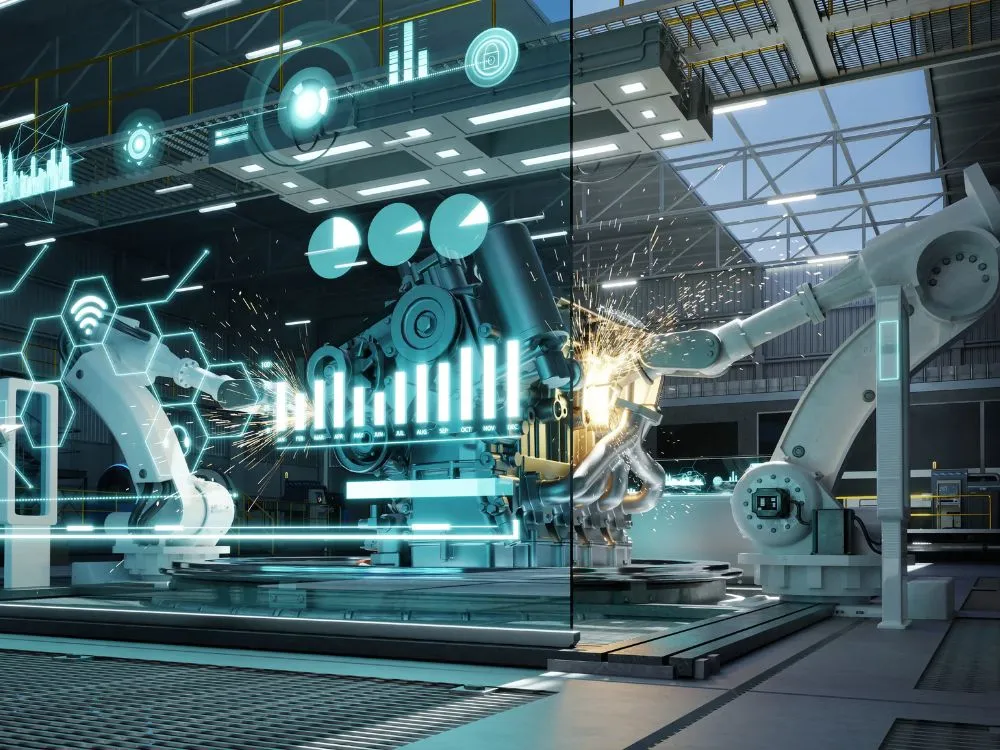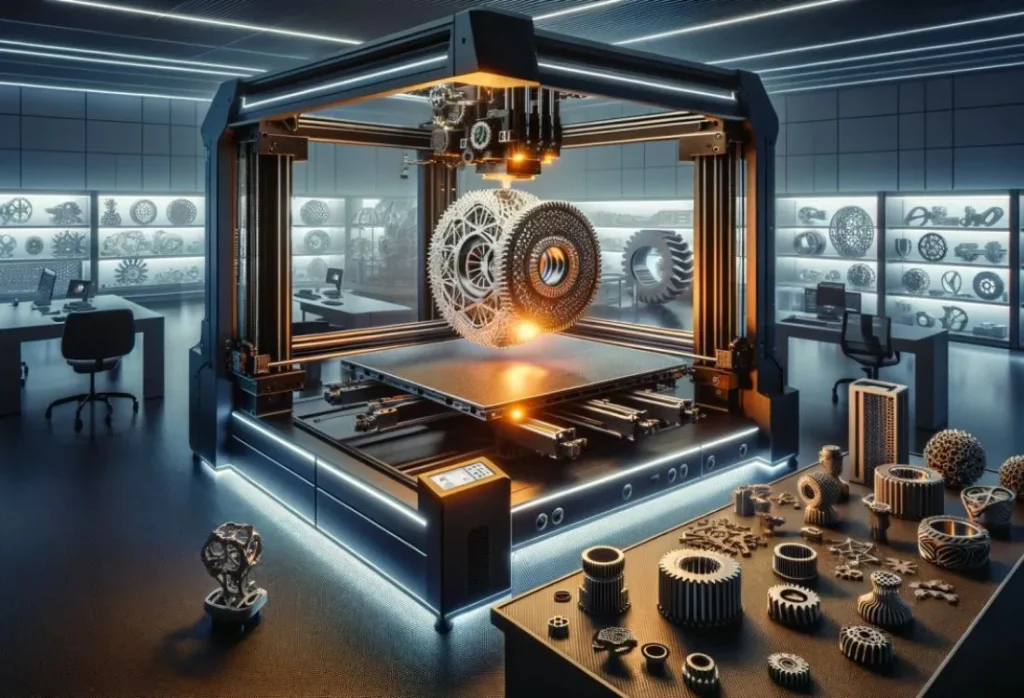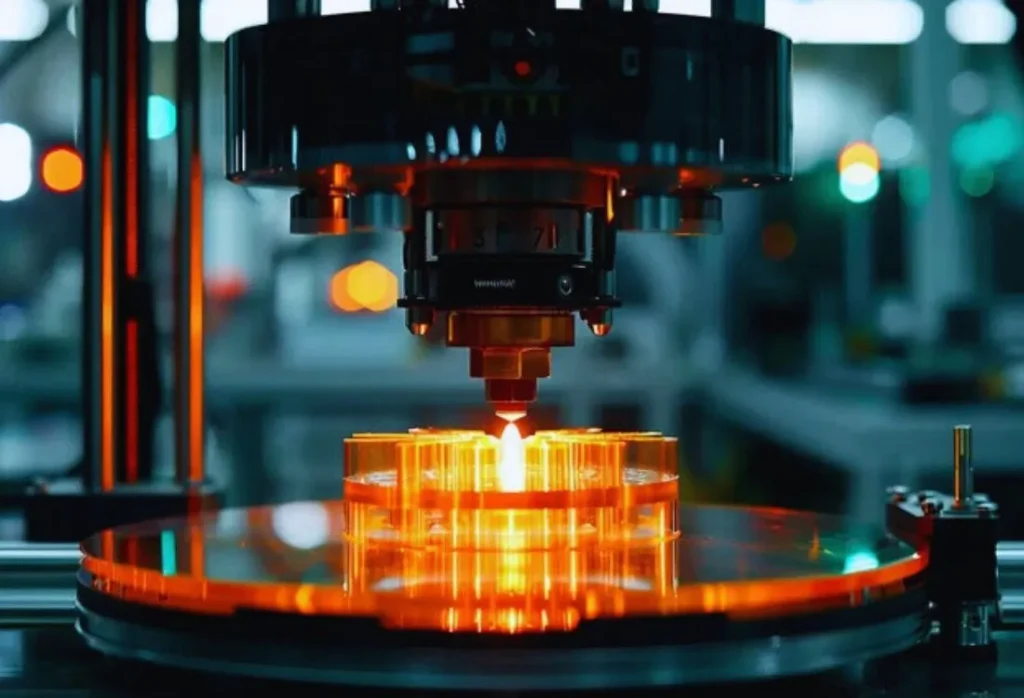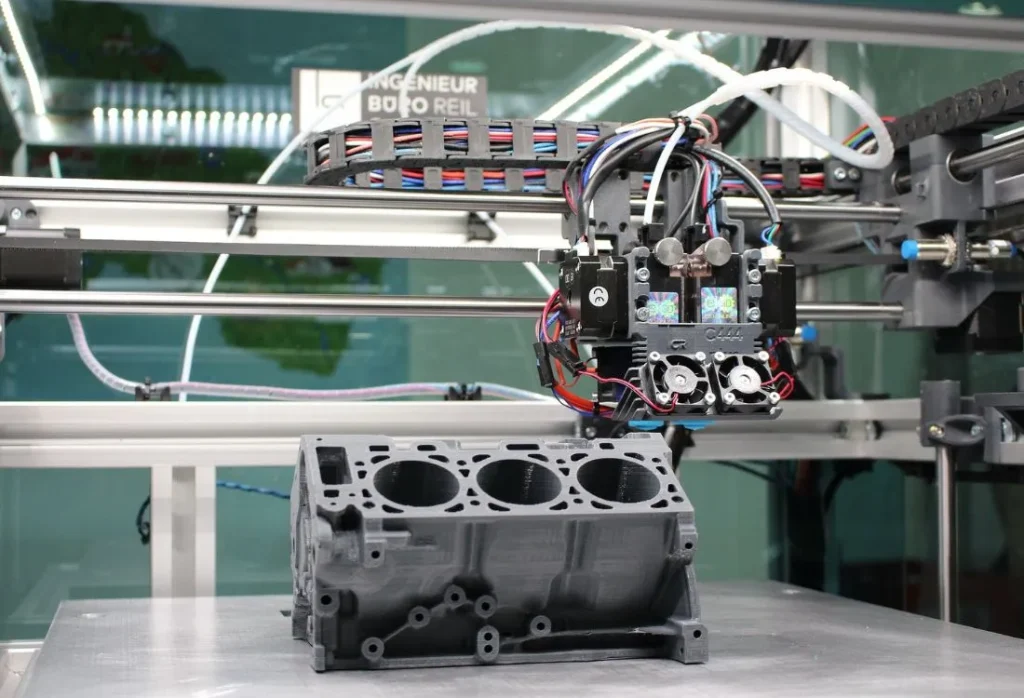A New Era of Manufacturing
Revolutionizing Manufacturing 3D Printing is making it possible to create almost anything from a digital design. This technology is transforming manufacturing in ways we never imagined. From hobbyists building models at home to businesses producing custom parts, 3D printers are changing the rules. Across the USA, DIY enthusiasts and small companies are embracing 3D printing to save time, cut costs, and unleash creativity.
This article explores the operation of 3D printing, its practical applications, and the reasons behind its revolutionizing manufacturing worldwide.

What Is 3D Printing and How Does It Work?
3D printing, also called additive manufacturing, turns digital designs into real objects. It starts with a 3D model created in design software or downloaded online. The printer reads the file and builds the object by adding material layer by layer. Each layer is like a thin slice. When stacked, they form a three-dimensional shape. Unlike traditional manufacturing, it adds material instead of cutting it away.
Creating objects layer by layer opens up new possibilities for designers and inventors. For example, a designer can make a custom phone case in just a few hours, perfectly matching the intended shape and size without any traditional tools. Power of 3D Printing makes this kind of rapid, precise creation possible.
The process begins with a digital file. Software slices the model into many thin layers. The printer follows these instructions, moving its printhead to deposit material precisely. Depending on the technology, the printer might melt filament, cure liquid resin, or fuse metal powder. After all layers are printed, the object is complete. Some finishing may be needed, such as removing supports or smoothing surfaces.
3D printing uses many materials. Plastics like PLA and ABS are common for hobby printers. Resins are cured with light for detailed models. Metals are used for strong industrial parts. Some printers use clay or ceramics for art and sculptures. Composites, biomaterials, and concrete are also possible.
Everyday examples include toys, spare parts, tools, home decor, and gadgets. Small businesses use 3D printing for prototypes, customized items, and short production runs. It enables faster creation, reduced waste, and greater flexibility compared to traditional manufacturing.
The Big Impact: How 3D Printing Is Revolutionizing Manufacturing
3D printing has shifted from a niche tool to a game-changer for modern manufacturing.
From Traditional Production Lines to On-Demand Printing
Traditional factories need heavy tooling, long setup, and large batches. 3D printing changes this. It allows fast, on-demand production. Each item can be customized without extra cost. Small workshops can now compete with big factories.
Lower Waste, Faster Prototyping, and Personalized Products
3D printing adds material only where needed. This reduces waste and saves raw materials. Prototyping is faster, taking hours instead of weeks. Businesses can offer personalized products without the high costs of traditional methods.
How Small Workshops Compete with Big Factories
Small workshops with a few 3D printers can produce specialized parts quickly. Local production reduces shipping and shortens supply chains. Agile businesses can now challenge large factories with speed, flexibility, and mass customization.
Real-World Applications Across Industries
Healthcare: Custom Prosthetics, Dental Tools, and Medical Models
3D printing allows custom prosthetics that perfectly fit each patient. Dental tools, implants, and surgical models are faster to produce. Surgeons can plan and practice on exact replicas, reducing errors and improving outcomes. Medical 3D printing enhances healthcare by making it more personalized, efficient, and cost-effective.
Automotive: Lightweight Parts, Prototypes, and Tools
In the automotive industry, 3D printing accelerates the development of prototypes and produces lightweight, durable parts. Small-batch production and custom tools help reduce costs. Makers can produce replacement or specialty parts quickly and efficiently. Industrial 3D printing gives designers flexibility and fast turnaround.
Fashion & Art: Creative Designs and Wearable Prints
Designers and artists utilize 3D printing to create unique jewelry, clothing, and art pieces. Complex shapes and custom designs are easier and cheaper to build. Small businesses can sell one-of-a-kind items while reducing waste. 3D-printed parts open creative opportunities in fashion and art.
Construction: 3D-Printed Homes and Furniture
Large-scale 3D printing can produce homes, walls, or furniture with less labor and material waste. Custom shapes and modular designs are possible, making construction faster and more sustainable. 3D printing in construction is revolutionizing the way buildings and interiors are designed and constructed.
Aerospace: Durable Components Made Faster and Cheaper
Aerospace uses 3D printing for strong, lightweight parts. Complex components are produced faster than with traditional methods. On-demand replacement parts reduce inventory and speed maintenance. Industrial 3D printing enables aircraft and spacecraft to achieve improved performance and efficiency.
To understand how 3D printing will shape the future, it helps to focus on the key trends and technologies. The table below highlights the most important aspects, from smarter machines to sustainable practices, and shows how they impact manufacturing, homes, and businesses by 2030.
| Aspect | Key Points | Impact / Benefit |
|---|---|---|
| Smarter Printers | AI-guided design, optimized printing paths | Stronger, lighter, cheaper parts; less manual work |
| Industrial-Scale Printing | Large-scale machines for full production runs | Faster manufacturing, higher output for businesses |
| Sustainability | Recycled plastics, metals, reduced material waste | Eco-friendly production, lower carbon footprint |
| Local Production | On-demand printing near point of use | Reduced shipping, faster delivery, lower inventory costs |
| Job & Skill Shift | Design, workflow management, local print centers | New career opportunities, DIY & small business access |
| Applications | Homes (printed walls/fixtures), automotive, aerospace, medical | Flexible manufacturing, faster prototyping, personalized products |

3D Printing for DIY Enthusiasts and Small Businesses
Affordable Printers for Home and Startups
You don’t need to spend thousands to start 3D printing. Many affordable printers offer excellent quality for beginners and small businesses. Focus on build size, ease of setup, and reliability. A dependable printer saves time and lets you focus on creating, not fixing.
Creative Projects for Home and Business
3D printing opens doors for fun and useful projects:
- Toys & figurines: custom characters and collectibles.
- Gadgets & tools: phone mounts, replacement parts, small enclosures.
- Home décor: vases, planters, wall art.
- Business tools: prototypes, packaging, or small fixtures.
You can modify designs quickly and iterate faster than traditional manufacturing.
Selling Your 3D Prints
You can turn prints into income by:
- Online marketplaces: Etsy or similar platforms.
- Custom commissions: personalization like names, colors, or shapes.
- Local markets & craft fairs: show products in person.
Print-on-demand keeps costs low and reduces inventory risk. Offering unique designs and quality finishes helps you stand out.
Why It Matters
For DIY enthusiasts, 3D printing is a creative tool that brings ideas to life. For small businesses, it lowers barriers to entry and allows fast, flexible production. Affordable, beginner-friendly printers make it easy to start experimenting and earning.
6. The Economic Edge: Cost, Speed, and Flexibility
When startups or small businesses enter manufacturing, significant investments and lengthy wait times can be overwhelming. 3D printing changes that.
Why 3D Printing Saves Money and Time for Startups
One significant advantage is the low up-front cost. You don’t need expensive molds or tooling that traditional factories require. Small batch runs are now affordable.
Time to market is faster. Prototypes can be printed, tested, and refined quickly. This helps startups bring ideas to life faster than ever.
Waste is reduced because 3D printers use only the material needed. Less scrap means lower material costs and a cleaner, more sustainable process.
All these factors let startups experiment freely, adapt designs quickly, and scale without huge financial risks.
Less Inventory, Less Shipping, More Local Production
Instead of producing thousands of units and storing them in a warehouse, businesses can print only what is needed. This keeps inventory costs low and reduces financial strain.
Local production reduces shipping costs and shortens supply chains. Manufacturers can respond quickly to customer orders or local market trends.
By producing close to where products are sold, businesses gain flexibility. They can meet demand more quickly, offer customization, and remain agile in changing markets.
The Rise of “Print-On-Demand” Manufacturing
Print-on-demand is revolutionizing the way products are manufactured. Instead of mass producing, companies keep digital files ready and print items as orders come in.
This approach reduces the risk of overproduction, lowers storage needs, and enables businesses to serve niche markets or offer customized products.
Startups can test market demand, iterate on designs, and scale production as needed. It turns manufacturing into a flexible tool rather than a costly commitment.

7. Challenges and Limitations to Overcome
High Material Costs, Longer Print Time & Design Skills
One of the biggest hurdles in 3D printing today is the cost of materials. Specialty plastics, metal powders, or resins can be expensive. For small businesses or DIY makers, this raises the barrier to entry.
Print time is another challenge. High-resolution prints or fine layers can take many hours. While quality improves, production speed drops. This makes large projects time-consuming and slows scaling.
Design skills also matter. Creating CAD designs, preparing files, selecting the appropriate slicing settings, and configuring builds all impact the final product. Many beginners underestimate the time and expertise required to produce high-quality prints.
Altogether, material cost, print speed, and design skills are key challenges for makers and businesses alike.
Environmental & Quality-Control Concerns
3D printing reduces waste compared to traditional methods, and it enables local production, which in turn cuts shipping emissions.
However, some printers consume a lot of energy, especially metal or high-end resin systems. Unused powders and leftover resin can also create waste, and recycling is not always easy.
Quality control remains a hurdle. Layer-by-layer construction can create weak bonds between layers. Dimensional accuracy may vary. Businesses often need post-processing, inspection, or certification, especially for medical or aerospace applications. Maintenance and monitoring are essential to ensure consistent quality.
Innovations Solving These Issues
New developments are helping overcome these challenges:
- Material innovation: New filaments, resins, and powders are stronger, more affordable, and easier to recycle.
- Smarter software: Adaptive slicing and AI-driven tools optimize speed, resolution, and support structures.
- Energy efficiency: Modern printers use less power, and better recycling practices reduce waste.
- Maintenance & monitoring: Sensors and automated alerts help catch errors early and maintain quality.
- Scalability tools: Hybrid manufacturing and optimized workflows enable businesses to transition from prototypes to small-scale production more efficiently.
The Future of 3D Printing: What’s Next?
Smarter Printers and AI Design
3D printers are becoming smarter and faster. AI helps design parts that are lighter, stronger, and cheaper to produce. By 2030, industrial-scale printers will handle complete production runs. DIYers and small businesses will enjoy easier, “plug-and-print” workflows without much manual setup.
Sustainability and Recycling
3D printing utilizes only the necessary material, resulting in less waste. Recycled plastics and metals are now used as feedstock. Local printing also reduces shipping and carbon footprint, making production more eco-friendly.
Shaping Homes, Jobs, and Industries
Large-scale 3D printing is transforming construction, allowing walls and fixtures to be printed on-site. Jobs will shift toward local print centers, design, and workflow management. Supply chains will become faster and more flexible, with on-demand production reducing inventory and shipping costs.
The future of 3D printing is bright. Smarter machines, AI, and sustainable practices will reshape manufacturing, homes, and businesses by 2030. Next-gen 3D printers will make local, creative, and eco-friendly production accessible to everyone.

Building a Better Tomorrow with 3D Printing
3D printing is revolutionizing the way we create, produce, and innovate. It empowers hobbyists, entrepreneurs, and big businesses alike. The technology saves time, reduces costs, and opens endless creative possibilities.
From custom prosthetics to home gadgets, 3D printing shows that imagination can become reality. Whether you are a DIY enthusiast or a small business owner, there is a place for 3D printing in your world.
Start exploring today. Even a small printer can unlock new opportunities and help you stay ahead in this changing manufacturing landscape.
Call to Action (CTA)
Ready to explore 3D printing? Start small with an affordable printer today. Experiment, create, and bring your ideas to life. Your journey in revolutionizing manufacturing begins now!
Frequently Asked Questions (FAQ)
What industries benefit most from 3D printing?
Healthcare, automotive, aerospace, fashion, construction, and small-scale manufacturing all benefit from 3D printing.
Is 3D printing expensive for small businesses?
Desktop 3D printers are affordable. Costs depend on materials and scale. Many small businesses find it cost-effective.
Can I start a business with a desktop 3D printer?
Yes! Entrepreneurs sell products like toys, spare parts, and custom items online or locally.
How is 3D printing eco-friendly?
3D printing reduces waste and shipping needs. New recycled and sustainable materials are also being used.
What skills do I need to start 3D printing?
Basic computer skills, design software knowledge, and creativity are enough to start printing small projects.
